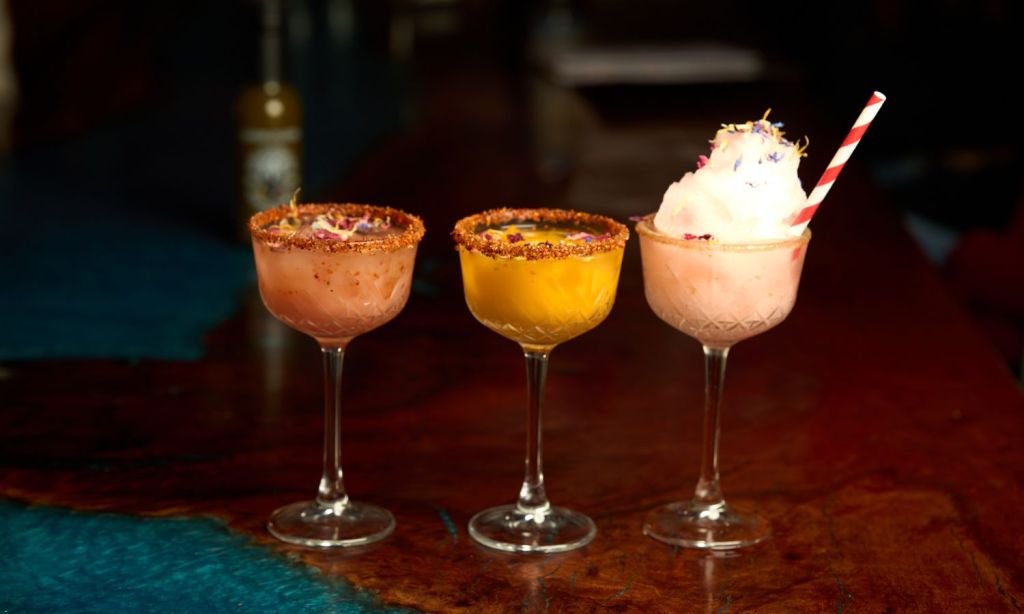When you think of fermentation, you probably think of kimchi, kombucha and sauerkraut. You probably don’t associate it with cocktails. But fermented cocktails are growing in popularity in Australia — and they’re part of a bigger drinks trend.
Melbourne’s Bar Spontana serves a Spro Tini with a lacto-fermented red grape. Lars Bar and Grill in the Gold Coast has a ‘Miso Sorry’ cocktail, made with miso, honey, Earl Grey tea, Scotch whiskey and lemon juice. Odd Culture Newtown serves a Tepache Spritz, made with fermented pineapple and The Waratah has a Chardonnay and Pineapple cocktail that blends pickled pineapple with skin-contact Chardonnay.
“Fermentation has been around in drinks and brews forever,” says Matt Johnson, beverage manager of Taphouse Sydney. “It makes sense that bartenders would harness it. World-class restaurants like Noma using these methods can create these trends.”
Fermented cocktails tap into the trend for bolder, more complex flavours, says Menak Grover, co-founder of Melbourne hospitality group Hecho en Mexico. They tend to be less sweet with more balanced acidity. Grover says he’s seeing bartenders using tepache (fermented pineapple), vinegar and brine for fermented cocktails.
“Plus, the natural fermentation process can introduce probiotic elements that appeal to health-conscious customers,” he says.
Cocktail Solo Traveller at Maybe Sammy includes lacto-fermented plum, with a salt breaking down the sugars in the fruit, creating lactic acid. The process preserves the plum and brings a tangy, savoury flavour to the cocktail.
Maybe Sammy’s venue manager Sarah Proietti thinks fermentation’s recent popularity is partly due to cocktail competitions, which encourage bartenders to push boundaries and draw inspiration from cooking. Books like The Noma Guide to Fermentation and Liquid Intelligence have also contributed to the popularity as they demystify the science behind the process.
“Fermentation also aligns with the growing focus on sustainability as it preserves seasonal ingredients and reduces waste, making it a natural fit for today’s bar practices,” says Proietti.
Pasquale Scarpiello, bars manager for Genzo, Soluna and Sol Bread and Wine, says fermentation plays a pivotal role in waste reduction in bartending by giving a second life to produce that may otherwise end up discarded. Bartenders can also use overripe or leftover fruit to create fermented ingredients, reducing waste, says Grover.
“Fermentation techniques were dabbled with before but they’re much bigger now — it’s just an additional step in the mixology evolutionary process,” says Scarpiello. “In the Watermelody cocktail I created, I combined light rum, ginger liqueur and chilli with homemade lactose-fermented watermelon and honey syrup.”
Scarpiello also created cocktail Mad Vision which mixes bourbon, Aperol, lacto-fermented peaches and Aztec chocolate bitter. It’s garnished with dehydrated, lacto-fermented peaches leftover from the fermentation process.
“Our taste and knowledge of drinking is becoming more refined, the quality of spirits is much higher and mixologists are pushing the boundaries more,” says Scarpiello.
The Miso Sorry cocktail at Lars Bar and Grill was inspired by a trip bar manager Carl Robusto took to Japan. He wanted to create a drink that was sweet but with a hint of saltiness and an overall umami taste.
Robusto says bartenders are increasingly experimenting with fermentation as it adds depth and complexity to cocktails. He says the trend has roots in the craft cocktail movement which emphasises unique ingredients and profiles.
“Fermented ingredients can elevate a drink, offering new taste dimensions and layers you won’t find in traditional cocktails,” he says. “The natural acidity from fermentation can enhance and balance flavours.”
Grover predicts more Australian bars using house-made tepache and fermented fruit for cocktails. As people become more open to savoury flavours in drinks, he thinks ingredients like fermented chillies and limes will likely become more common. Johnson expects fermentation to evolve significantly in the low-alcohol and no-alcohol space as you can create many complex flavours without leaning on the alcohol too much.
Robusto and Scarpiello think the trend’s sustainability factor will make it even more popular. Reducing waste is a serious discussion among bartenders, says Robusto. Fermented cocktails also often use local, seasonal produce, an element of sustainability.
“Overall, the exploration of fermentation in cocktails is just beginning,” says Robusto. “It will be exciting to see where it leads.”
Related: MSG Is Not Your Enemy
Related: Tastemakers: Jad Nehmetallah Says Western Sydney’s Dining Scene Is a Sleeping Giant
Read more stories from The Latch and subscribe to our email newsletter.

